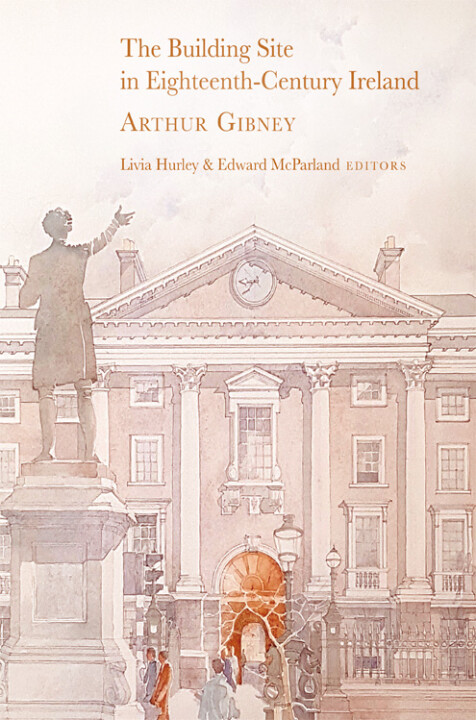The building site in eighteenth-century Ireland
by Arthur Gibney
Livia Hurley & Edward McParland, editors
This study by the late Arthur Gibney takes you among labourers, craftspeople, contractors, builders and designers as they populate the building sites of eighteenth-century Ireland. Gibney tells a story that has never been told so comprehensively before. What kind of contracts bound those involved? How much did it cost to bring a cargo of oak to the Dublin docks from Riga or Shillelagh – or of fir from Trondheim – and what kind of roof trusses or floor framing was it used for? What was distinctively Irish about these structural features? What did plumbers do? How did roofers choose between slates and shingles and pantiles, and how did this choice affect the profile of a roof? Based on extensive documentary research and on a lifetime of experience of building and conservation, Gibney takes the interested layperson, the student, the architect and the conservationist behind the facades to give us an understanding of paint colours such as Venetian red and Spanish brown, the manufacture of stucco, the variations of Irish, English and French glass, the composition of masonry walls, and much more, in our great legacy of Georgian buildings.
Arthur Gibney was one of Ireland’s most notable twentieth-century architects. Livia Hurley is an architect and architectural historian in private practice in Dublin. She is one of five editors and principal authors of Architecture, 1600–2000, vol. IV of Art and Architecture of Ireland (2014), and she teaches at the School of Architecture, UCD. Edward McParland is a fellow emeritus of TCD. His publications include James Gandon, Vitruvius Hibernicus (1985) and Public architecture in Ireland, 1680–1760 (2001).

